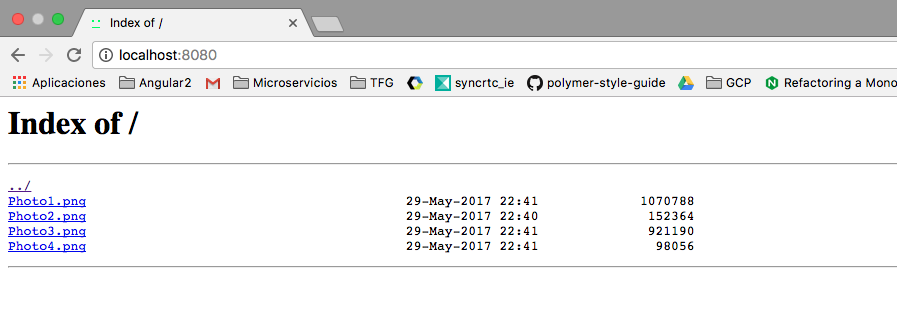Kubernetes's volumes are in a rough way understood as directorys which are accessible to the containers in a pod.
When using a [Microservice] architecture where all your services are loosely coupled, you may have a problem when scalig services that share files. A good aproach for this could be a distributed filesystem.
Kubernetes suports different kinds of volumes, but most of them are persistent volumes, which lead to some problems when scaling.
The volumes which can be integrated with the main cloud plattforms (AWS,GCP,Azure) are:
gcePersistentDiskawsElasticBlockStoreazureFileVolumeazureDisk
From this ones, the only one suppoting a distributed filesystem is azureFileVolume which uses Azure File Storage.
But looking into AWS and GCP products, you can find distributed systems among their products:
- AWS: S3 Buckets
- GCP: Cloud Storage
This means that we have to mount this filesystems in a "custom" way thus not being implemented natively.
Google's Cloud Storage provides a object-based distributed filesystem which can be mounted into your container using Google´s gcsfuse FUSE-based file system.
Here are steps needed to achieve this through a practical example.
Here you can provide your Google application default credentials to authenticate and start using Google Cloud Storage. After downloading your JSON credentials file, create a secret object inside your Kubernetes cluster.
kubectl create secret generic storage-auth-credentials --from-file=credentials=path/to/json
After this, make sure that you use the secret and mount it as a volume inside the gcsfuse container. This looks like this:
# Define your volumes
volumes:
- name: storage-credentials
secret:
secretName: storage-auth-credentials
items:
- key: credentials
path: storage-credentials.json
...
# Mount it as a volume from the secret
volumeMounts:
- name: storage-credentials
mountPath: /auth
readOnly: true
Another way to authenticate is providing your GKE cluster the OAuth scope storage-rw (Cloud Storage read/write). Automatically, all VMs created (your cluster nodes) will have authenticated access to your buckets. It should look like this:
gcloud container clusters create your-cluster --scopes=https://www.googleapis.com/auth/devstorage.read_write
docker build -t nginx-gcsfuse:v1 .
# Running in docker
docker run --privileged -d -p 8080:8080 nginx-gcsfuse:v1
#Running in k8s
kubectl create -f nginx-gcsfuse-mono.yaml
kubectl scale --replicas=3 deploy/nginx
Using an emptyDir volume mounted by a initContainer
kubectl create -f nginx-gcsfuse-init.yaml
It is possible to mount S3 Buckets inside your pod, for this it's needed a FUSE-based file system like s3fs-fuse, wich allows you to authenticate to AWS and mount the bucket in your container.
Examples for this will be implemented in the future.
As told above, kubernetes supports natively a volume called AzureFileVolume that uses Azure File Storage. That it can be used inside the deployment using a secret with Azure´s credentials.
Here is a more detailed example from the Kubernetes repo:
volumeMounts:
- name: azure
mountPath: /mnt/azure
...
# Mount it as a volume using a secret
volumes:
- name: azure
azureFile:
secretName: azure-secret
shareName: k8stest
readOnly: false
Examples for this will be implemented in the future.

